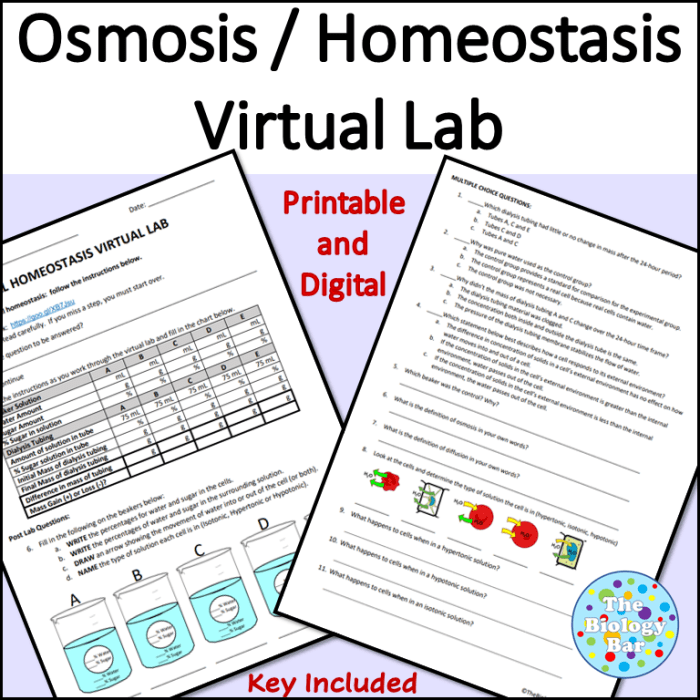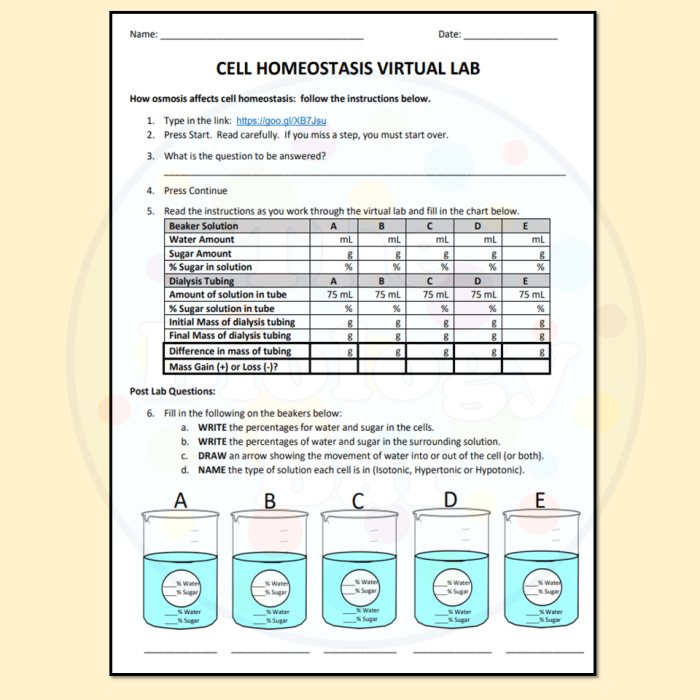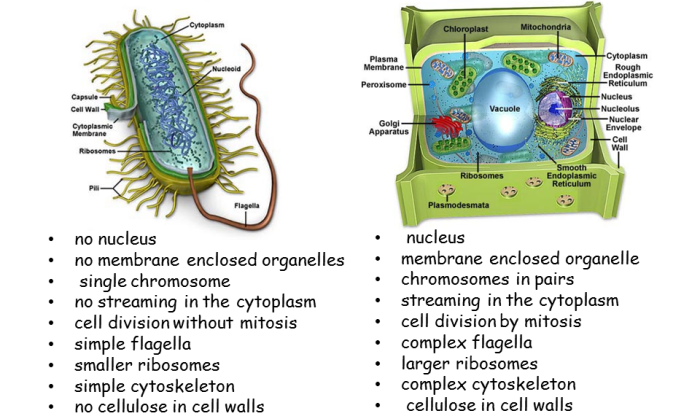Embark on a scientific expedition with the cell homeostasis virtual lab answer key PDF, your trusted companion in unraveling the intricacies of cellular equilibrium. This comprehensive guide delves into the fundamental concepts of cell homeostasis, empowering you with the knowledge to navigate the dynamic world of cellular processes.
Within these pages, you will discover the factors that influence cellular stability, the mechanisms employed by cells to maintain homeostasis, and the implications of these processes for overall cellular function. Prepare to immerse yourself in a virtual laboratory environment, where hands-on experimentation and data analysis provide an interactive learning experience.
Cell Homeostasis Virtual Lab Overview
The Cell Homeostasis Virtual Lab is an interactive learning environment that simulates the conditions within a living cell. It allows students to explore the concept of cell homeostasis and how cells respond to changes in their environment. The virtual lab features a variety of experiments that can be conducted to investigate different aspects of cell homeostasis.
The virtual lab environment includes a cell membrane, cytoplasm, nucleus, and other organelles. Students can manipulate the conditions within the cell, such as temperature, pH, and the concentration of various substances. They can also add or remove substances from the cell and observe the effects on cell function.
Cell Homeostasis Concepts

Cell homeostasis is the ability of a cell to maintain a stable internal environment despite changes in its surroundings. Homeostasis is essential for cell function, as it allows cells to carry out their metabolic processes efficiently and respond to external stimuli.
A variety of factors can affect cell homeostasis, including temperature, pH, the concentration of ions, and the availability of nutrients. Cells have a number of mechanisms to maintain homeostasis, including:
- Transport proteins that move substances across the cell membrane
- Enzymes that catalyze chemical reactions
- Hormones that regulate cell activity
Virtual Lab Procedures: Cell Homeostasis Virtual Lab Answer Key Pdf

- Open the Cell Homeostasis Virtual Lab.
- Select the experiment you want to conduct.
- Follow the instructions on the screen to set up the experiment.
- Collect data from the experiment.
- Analyze the data to determine the effects of the independent variable on the dependent variable.
| Independent Variable | Dependent Variable | Results |
|---|---|---|
| Temperature | Cell growth | Cell growth increased with increasing temperature up to a certain point, then decreased with further increases in temperature. |
| pH | Enzyme activity | Enzyme activity was highest at a pH of 7.0 and decreased with increasing or decreasing pH. |
| Concentration of ions | Cell membrane permeability | Cell membrane permeability increased with increasing concentration of ions. |
Data Analysis and Interpretation

The data from the virtual lab experiments can be used to identify patterns and trends in cell homeostasis. For example, the data in the table above shows that cell growth increases with increasing temperature up to a certain point, then decreases with further increases in temperature.
This suggests that there is an optimal temperature for cell growth and that cells are unable to grow properly at temperatures that are too high or too low.
The data can also be used to test hypotheses about cell homeostasis. For example, a student might hypothesize that the concentration of ions in the environment affects cell membrane permeability. The student could test this hypothesis by conducting an experiment in which the concentration of ions is varied and measuring the permeability of the cell membrane.
Extensions and Applications

- Investigate the effects of different variables on cell homeostasis, such as the concentration of nutrients, the presence of toxins, or the exposure to radiation.
- Design experiments to test hypotheses about cell homeostasis.
- Apply the concepts learned in the virtual lab to real-world scenarios, such as the development of new drugs or treatments for diseases.
Here are some practical examples or case studies that illustrate how the concepts of cell homeostasis can be applied to real-world scenarios:
- The development of drugs that target ion channels in the cell membrane to treat diseases such as cystic fibrosis and epilepsy.
- The use of enzymes to break down toxins in the environment.
- The development of new treatments for cancer that target the cell cycle.
Essential FAQs
What is the purpose of the cell homeostasis virtual lab?
The cell homeostasis virtual lab provides an interactive environment for students to explore the concepts and mechanisms of cell homeostasis through hands-on experimentation and data analysis.
What factors can affect cell homeostasis?
Various factors can affect cell homeostasis, including temperature, pH, nutrient availability, and the presence of toxins or pathogens.
How do cells maintain homeostasis?
Cells employ various mechanisms to maintain homeostasis, such as active transport, passive diffusion, and feedback loops.
